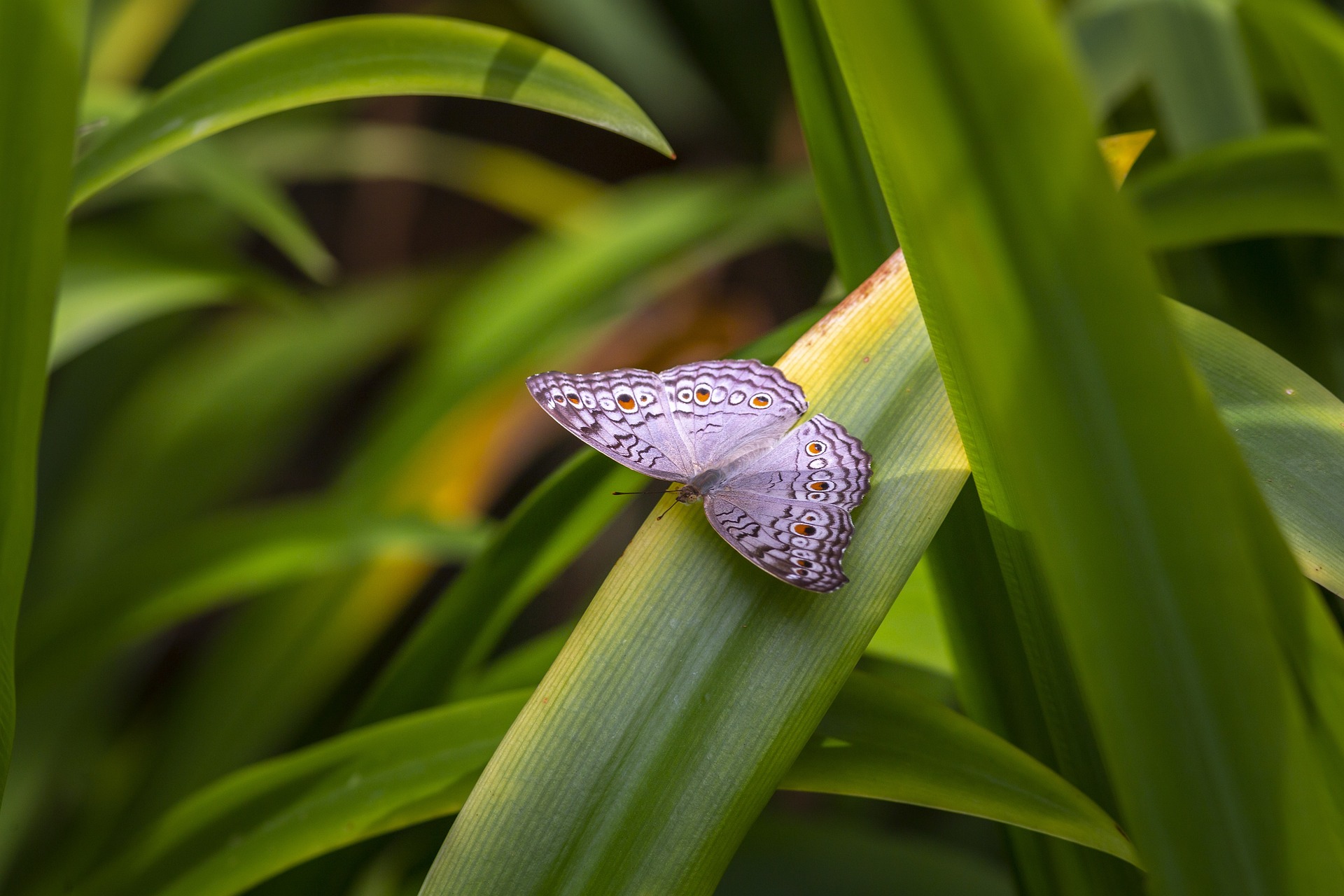The Grey Pansy (Junonia atlites) is a butterfly species belonging to the family Nymphalidae, commonly found in South and Southeast Asia. Known for its delicate and attractive wing patterns, the Grey Pansy is a favorite among butterfly enthusiasts. Here’s an overview of the Grey Pansy:
Appearance:
- Wingspan: The Grey Pansy has a wingspan of approximately 50 to 65 millimeters.
- Coloration:
- Upper Side: The upper side of the wings is greyish-brown with distinctive eye spots and wavy patterns. The forewings have two prominent eyespots and several smaller spots, while the hindwings feature three larger eyespots.
- Under Side: The underside of the wings is paler and more subdued, providing camouflage when the butterfly is at rest with wings closed.
- Markings: The wings are decorated with dark brown lines and patches, adding to the intricate and eye-catching pattern.
Habitat:
- Preferred Habitats: The Grey Pansy prefers open areas such as gardens, parks, fields, and forest edges. It is often found in sunny, open spaces where it can easily bask and feed.
- Geographic Range: This species is widely distributed across South and Southeast Asia, including countries like India, Sri Lanka, Myanmar, Thailand, Malaysia, and Indonesia.
Behavior:
- Feeding: The Grey Pansy feeds on nectar from a variety of flowering plants. It is often seen visiting lantanas, marigolds, and other garden flowers.
- Basking: This butterfly is known for its basking behavior. It often perches on open ground or low vegetation with its wings spread out to soak up the sun.
- Flight Pattern: The Grey Pansy has a distinctive flight pattern, characterized by short, quick flights interspersed with periods of basking.
Life Cycle:
- Eggs: Females lay eggs singly on the leaves of host plants, which include various species of Acanthaceae and Verbenaceae.
- Larvae (Caterpillars): The caterpillars are dark and spiny, with a preference for feeding on the leaves of the host plants. They undergo several molts before pupating.
- Pupae: The pupae are brownish and resemble dried leaves, providing camouflage from predators.
- Adults: After emerging from the pupae, adult butterflies continue the cycle by seeking mates and laying eggs.
Ecological Role:
- Pollination: As nectar feeders, Grey Pansies contribute to the pollination of various flowering plants.
- Food Source: They are part of the food web, serving as prey for birds, spiders, and other predators.
Conservation Status:
- Population: The Grey Pansy is not currently considered threatened and has a stable population across most of its range. It is commonly found in its preferred habitats.
- Threats: Habitat destruction and pesticide use can negatively impact local populations, though this species is relatively adaptable.
Interesting Facts:
- Seasonal Variation: The Grey Pansy can exhibit seasonal variations in its appearance, with individuals seen during the dry season often being lighter and having more pronounced markings compared to those in the wet season.
- Territorial: Males are known to be territorial and can often be seen patrolling their chosen area, chasing away other butterflies.
Identification Tips:
- Eye Spots: The prominent eyespots on both the forewings and hindwings are a key identifying feature.
- Greyish-Brown Color: The overall greyish-brown color with wavy patterns helps distinguish it from other similar species.
- Behavior: Observing its basking behavior and flight pattern can also aid in identification.
In summary, the Grey Pansy (Junonia atlites) is a visually striking butterfly with distinctive wing patterns and important ecological roles in pollination and the food web. Its adaptability to various open habitats and widespread distribution make it a common and appreciated species in South and Southeast Asia.
Visited 475 times, 21 visit(s) today
Views: 455
Subscribe to the newsletter:
